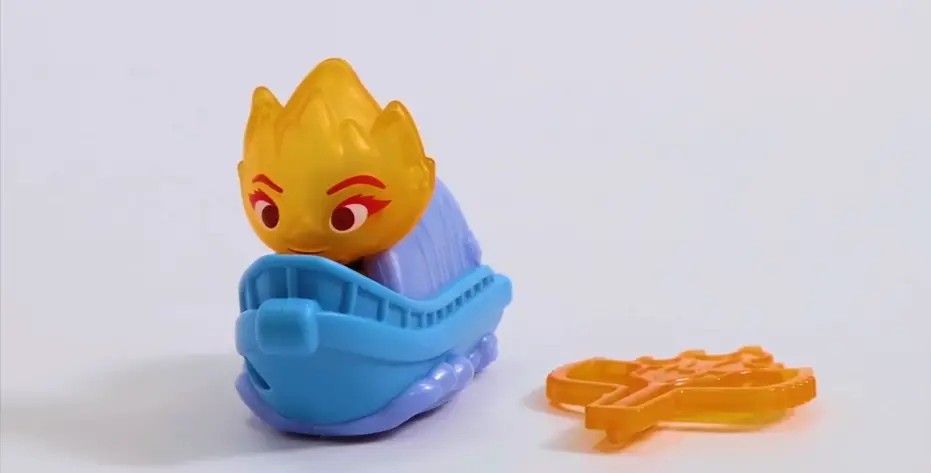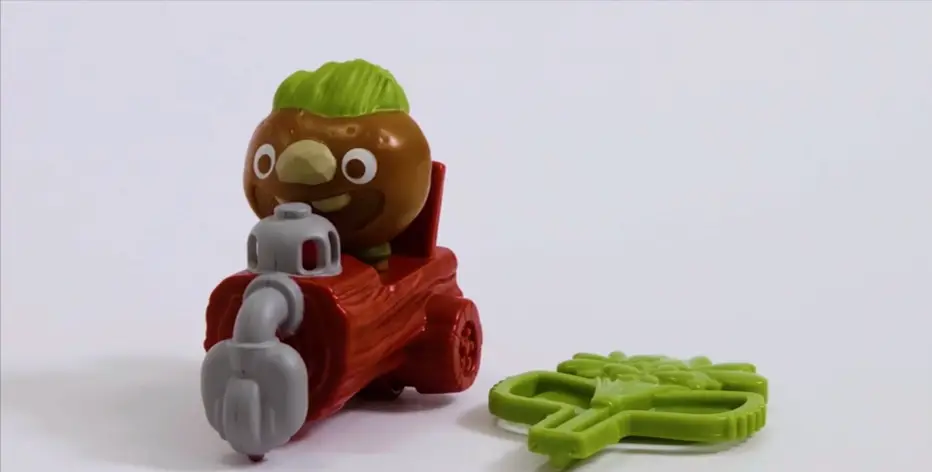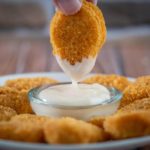In the fast food world, McDonald’s has carved a unique space with its Happy Meal, primarily targeting the youngest demographic of consumers.

A significant part of Happy Meal’s appeal lies in including a toy, often tied to popular children’s entertainment franchises. However, in recent years, there has been growing sentiment among consumers that the quality of these toys has significantly declined.
Let’s explore this perceived decline in quality, drawing on comparisons with past offerings and considering several influencing factors.
Changes in Material Quality and Durability
When we reflect on McDonald’s toys from the 80s and 90s, one cannot help but notice their collectible nature. These toys were not just playthings but collectibles, from mini Beanie Babies to Hot Wheels cars.
The robust materials and intricate detailing made them desirable beyond their association with a fast-food meal. Fast forward to the present day, and many customers feel that the quality of these toys has significantly decreased.
Current toys are often made from cheaper plastic and need more intricate detailing than previous toys boasted. For instance, take the “101 Dalmatians” set from the late 90s.
Each figurine was uniquely designed, representing different characters from the movie with individual poses and expressions. Compare that with the more recent “Minions” toys, which generally have a uniform design with minor variations.
The difference in material quality, craftsmanship, and attention to detail is noticeable. This shift could be due to cost-cutting measures or changes in manufacturing processes.
However, the result is a product that does not hold up to the standard of its predecessors, contributing to the perception that McDonald’s toys have become ‘bad.’
The Shift Towards Commercialization
Brand tie-ins have always been a part of McDonald’s toy strategy. It’s an effective method of attracting children who are fans of particular shows or movies. However, some customers feel this aspect needs to be more emphasized in recent years.
The toys offered included educational items, games, and branded merchandise. Today, almost every toy is a tie-in with a currently popular movie or TV show.
This shift towards commercialization could be seen as a move away from originality and variety. The focus is more on promoting the latest entertainment franchise than providing a unique and engaging toy.
The constant churn of movie merchandise contributes to monotony, with one set of figurines quickly replaced by another.
Reduced Educational Value
Another criticism leveled at modern McDonald’s toys is their reduced educational value. In the past, McDonald’s collaborated with educational brands like Discovery Channel, offering toys that were not just fun but also provided learning opportunities.
Some toys had interactive elements that encouraged children to build or solve simple problems.
In contrast, many of today’s toys are simple figurines with limited opportunities for interaction or learning. While these toys may effectively promote the latest blockbuster, they fall short of providing an engaging and educational experience for children.

Rising Environmental Concerns
The environmental impact of McDonald’s toys has come under scrutiny in recent years. With growing awareness about plastic pollution, many consumers and environmental groups have criticized McDonald’s for using cheap, non-biodegradable plastics in their toys.
In response to these concerns, McDonald’s announced in 2021 that it would gradually phase out plastic toys from its Happy Meals in favor of more sustainable alternatives.
While this is a positive step towards environmental responsibility, the transition period might result in toys that are even less durable and appealing than before, further contributing to the perception of declining quality.
Changing Consumer Expectations
Today’s children have access to a wide range of sophisticated toys and digital games that offer high levels of interactivity and engagement. These heightened expectations can make the simple toys provided by McDonald’s seem lackluster.
Moreover, to make Happy Meals healthier and more educational, McDonald’s offers books instead of toys in some regions. While the intention behind this move is commendable, it has been met with mixed reactions.
Many customers, especially those who fondly remember the traditional toys, view this change as a further decline in the quality of the Happy Meal experience.
Lack of Innovation
One of the arguments often made against McDonald’s current range of toys is the lack of innovation. In earlier years, McDonald’s toys often came with unique features that set them apart from traditional toys.
For instance, some toys had moving parts, light-up elements, or even interactive components. These innovative features made Happy Meal toys exciting and unique.
However, recent toys have been critiqued for their lack of such features. Many are plain figurines with no moving parts or special elements. This lack of innovation can make the toys seem dull and uninspiring, contributing to the perception of declining quality.
Safety Concerns
Over the years, there have been instances where McDonald’s toys have been recalled due to safety concerns. Small parts can pose a choking hazard, and sharp edges can cause injury.
While these issues aren’t widespread, they contribute to the perception of declining toy quality.
Toy manufacturers must adhere to strict safety standards, especially when their target demographic is children. Any lapse in this area can significantly impact the perceived quality and trust in the product.
Overreliance on Popular Franchises
While tying toys to popular franchises can be an effective marketing strategy, there’s a belief among some consumers that McDonald’s may need more support on this approach.

Years ago, McDonald’s toys offered various themes, providing children with a broader range of play experiences.
Today, however, every other month brings another set of superhero or animated movie characters.
While these toys can be exciting for franchise fans, others might find them repetitive and uninteresting. This overreliance on popular franchises could limit the appeal and perceived quality of McDonald’s toys.
Conclusion
The perception that McDonald’s toys have declined in quality is influenced by many factors, including changes in material quality, increased commercialization, reduced educational value, environmental concerns, and changing consumer expectations.
While nostalgia for the toys of the past plays a role in these views, the shifts in McDonald’s toy strategy are evident. It remains to be seen how McDonald’s will navigate these challenges in the future.
Will they find a way to recapture the magic of their earlier toys while addressing modern-day concerns and expectations? Only time will tell. For now, though, it’s clear that many customers miss the McDonald’s toys of yesteryears.





